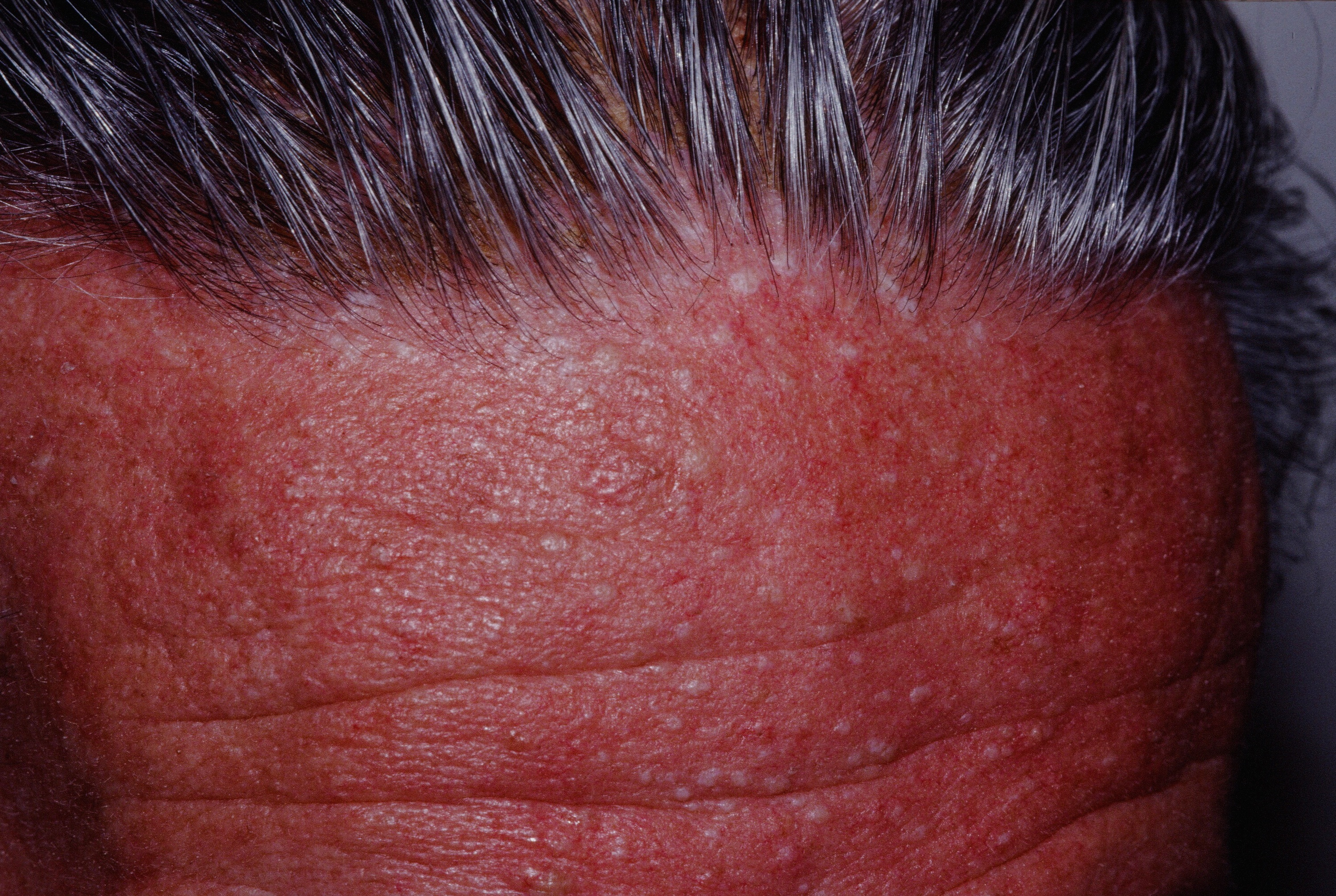
Multiple trichodiscomas on the forehead.

Multiple trichodiscomas on the forehead.
A 50-year-old man presented with facial papules on the cheeks that had appeared approximately 1.5 years prior and gradually spread over the face and neck. His mother and brother had similar clinical findings. Family history was notable for a maternal uncle who had died in his 30s of an unknown type of renal cancer. Computed tomography of the chest showed multiple bibasilar pulmonary cysts. Magnetic resonance imaging was negative for renal tumors.
Birt-Hogg-Dubé syndrome (BHDS) is a rare genodermatosis inherited AD and is characterized by multiple papules on the face, skin tags, pulmonary lesions and renal tumors.
The diagnosis of Birt-Hogg-Dubé syndrome may be confirmed given one major or two minor criteria.
Major criteria:
Pathogenic germline mutation of FLCN.
Minor criteria:
Multiple pulmonary cysts without an apparent cause (with or without spontaneous pneumothorax).
Renal cancer with early onset (<50 years old).
First degree relative with BHD syndrome.
Multiple flesh-colored to whitish small monomorphous papules occur on the face, neck, ears and/or upper trunk. Hundreds of papules with a central comedone have been described.
Significant cutaneous clinical overlap may exists between BHD and TS. For example, facial angiofibromas and Koenen's tumors indistinguishable from those in TS have been reported in patients with BHD. Likewise, there is a report of fibrofolliculomas typical of BHD in a patient with confirmed TS.
Homepage | Who is Dr. White? | Privacy Policy | FAQs | Use of Images | Contact Dr. White